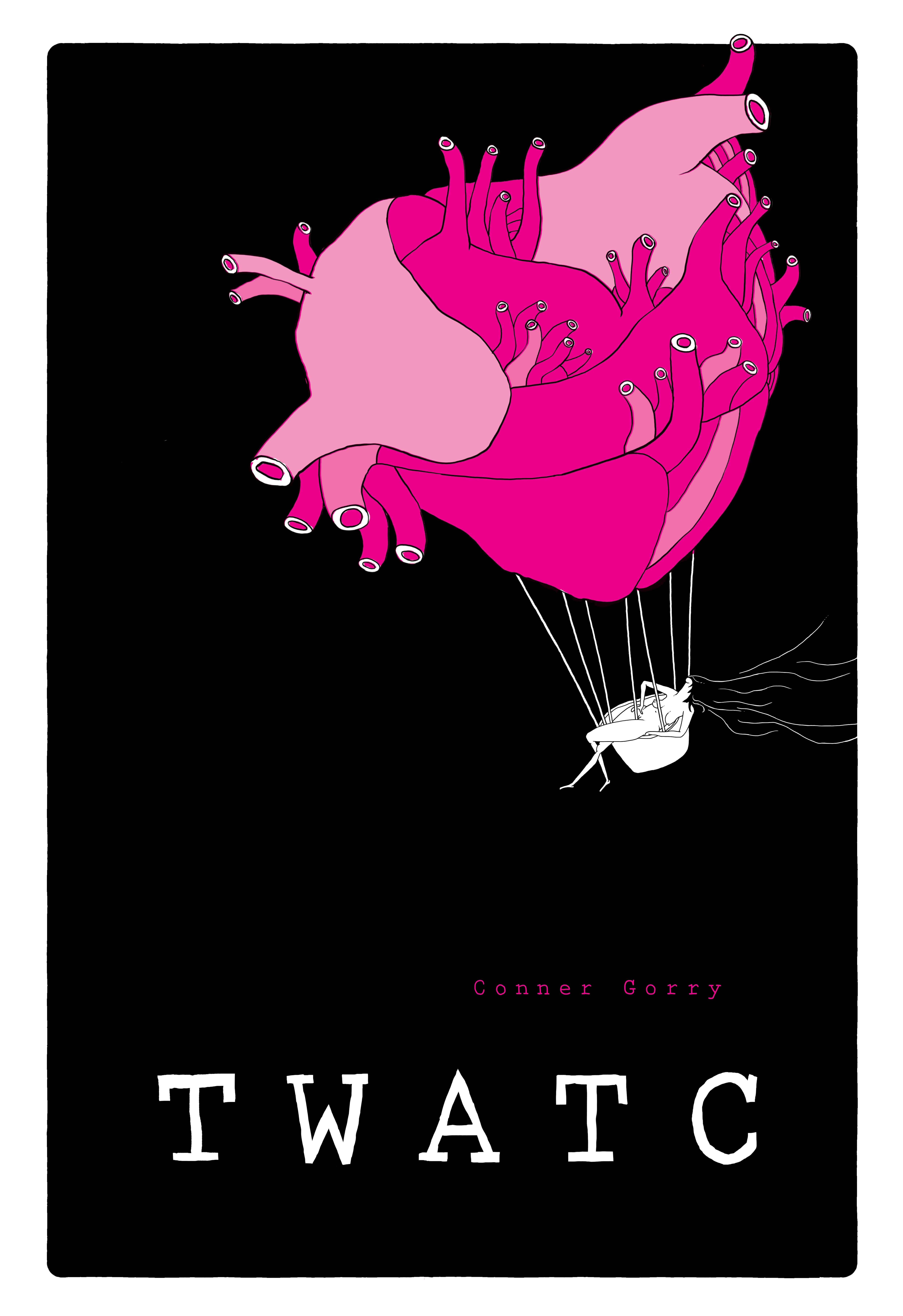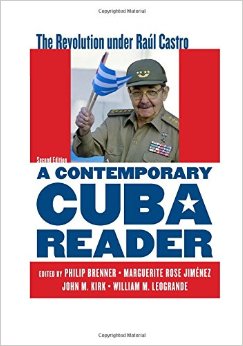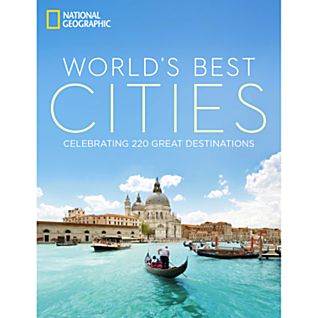[tweetmeme source=”connergo” only_single=false]
New tourism figures were released by Cuba recently and the news isn’t good: arrivals are up (as fans are quick to point out), but revenues are down (as detractors never fail to underscore). Regardless of your love/hate bent (see note 1), the seeming contradiction between more arrivals but less profits makes sense since a Canadian can fly into Varadero and stay a week at an all-inclusive resort for less than a Toronto-Havana plane ticket alone.
Visitors up and profits down isn’t necessarily a bad thing in the short term save for one small detail: many first timers who visit Cuba say they won’t return.
So what’s a little island to do?
Followers of Here is Havana know my feelings about the golf course strategy Cuba is doggedly pursuing to attract foreign investment and visitors, so I won’t flog that dead horse further. Medical tourism is another growth sector reaping rewards, if the number of Cuban Americans passing through the doors of Cira Garcia (the foreigner hospital here) is any indication. But I’ve recently seen another side of Cuban tourism and it looks a lot like the DR.
_____
One element of Cuba’s tourism strategy many people don’t know about is the push to get locals into the mix (see note 2). In theory it’s a great tactic: offer unbelievable deals for the domestic market and watch those precious CUCs migrate from under mattresses and into the national coffers. In practice however, it looks more like this:
Voluminous flesh rolling from scanty beachware – Cuban fashion is a force majeure under the best of circumstances, but take it to the seashore and it’s a Frederick’s of Hollywood train wreck. Lucite stilettos and lamé swimsuits with cutaway sides and gold buckles of unusual size, plus ridiculously shredded ‘cover-ups’ providing full on views of what four decades of congris does to a woman’s body – like a car crash, you want to look away, but can’t.
Drink, Eat, Sleep – There’s something of the spectacular watching Cubans scrum at an all-you-can-eat buffet. Let’s just say there isn’t a plate big enough for the piles of protein and starch they crave. As a work-around, friends and family members divvy up duties and fan out to the different stations, regrouping at their table with multiple plates so heavy they take two hands to hold: rice for 15, bread for a baseball team, mountains of pork chunks and potatoes, and coma-inducing towers of lard-laden sweets. Once the feeding frenzy begins, it blows over quickly, like a late afternoon thunderstorm. From the table, each diner to a one lumbers towards the nearest chaise lounge and passes out. Look for the beer bellies, listen for the snores.
Cost cutting & control – It’s not as bad as the old days when silverware had to be chained to the tables, but almost – on a recent visit to a beach installation that will remain nameless, it became clear that the cornerstone of the national tourism strategy is to maximize profits while limiting losses and cutting costs. I first realized it cruising the buffet. No exotic cheeses and pasta or steak stations like at other all-inclusives. For us it was claria and hot dogs, butter-less bread and shredded cabbage – more like a ‘comedor obrero’ (worker’s lunchroom) than a resort buffet, right down to the single salt shaker for the 200+ crowd. Other penny pinching measures included ‘honey’ that was really sugar water à la Special Period and to wash everything down, the choice of water or water (boiled, not bottled). No matter – the guajiro behind me at the buffet kept repeating breathlessly ‘está riquiquisisimo. ¡Riquiquisisimo!’
Tipsy entertainers – If you’ve ever been to a Cuban all-inclusive resort, you know they’re gaga for animación – entertainment from pool volleyball to salsa classes provided by gregarious, often gorgeous, Cubans known as animadores. At the low-budget place where we went, the animadora was a sweet ‘temba’ (35+) who downed not one, not two, but three screwdrivers before leading the crowd in a rousing round of karaoke.
Then there’s the reggaetón and overall pachanga of which Cubans are so fond – partying and kanoodling, dancing and romping about – often in public places. Not helping matters any are the plastic plates littering the beach, along with cups and fluorescent plastic straws, napkins and even a dirty diaper or two – in spite of the garbage cans spaced along the shore like birds on a wire or lovers on the Malecón (see note 3).
I wasn’t surprised that this resort was virtually foreigner-free (present company excepted). But I did realize on this trip that the most effective enforcer of so-called tourism apartheid is the almighty Market itself.
Money talks, bullshit walks – welcome to the Cuba Tourism 2.0.
Notes
1. Longtime Cuba followers know three cardinal rules apply when analyzing any news item: 1) consider the source; 2) read between the lines; and 3) after applying rules #1 and #2, accept the fact that you’ll probably never know the full story.
2. Prior to 2008, Cubans were not permitted to stay in hotels and resorts, leading many to brand the policy ‘tourism apartheid.’ That policy was reversed by Raul Castro.
3. Cubans’ aversion to trash cans is rivaled only by their aversion to flushing perfectly functional toilets. What up with that?











Hahaha, Conner! You have outdone yourself once again with your perceptive take on turismo a lo Cubano.
“Chaining the silverware to the table” some will take as sarcastic humor, but I remember being at el Palenque once when a lady(?) was caught with 15 sets of tableware still in their napkin wrappers in her purse. Was she shamed? Not a bit- argumentative to the very end as she rapidly beat feet out of there.
But your article is a bit incomplete without a mention of the impossibility of Ever encountering a roll of toilet paper in a place such as you describe- that Does have to be chained or welded in place. Or purchased from the attendant(call it a propina if you must)
Another great effort!
Ole
True story. My husband and I were out to dinner with two of his friends, a couple, in 2009, shortly after the ban was lifted on Cubans in tourist hotels.
Him: We went to Kawama in Varadero. It was amazing! We ate and drank for three days straight.
Her: And we came home with place settings for eight!
Him: I had to stop her at 8! The waiters started getting suspicious: each time we finished a meal, there would be no silverware left on the table.
I looked at my husband askance, eyebrow arched. The conversation rambled away from and then back again to tourism.
Him: It’s about time they let us into tourist hotels. But it’s going to attract the wrong element.
Me: You mean like people who steal silverware for 8?
I couldn’t resist. This type of hypocrisy I can’t stomach. Maybe this is why Im always the outsider inside cuba!
What a shame. Sorry for you and the position they put you in. Maybe next you find a better behaved couple….
Note 1 part 3 cannot be over emphasised!
Hi Conner ! You forgot one thing : the drinking in the pool. Cubans have a fondness of standing in the water with drinks all day long, and as they get merrier they start some strange “water-acrobatics”. In other words, forget about the pool, not accessible.
I avoid the pool at all costs for this reason. thanks for pointing this out.
Yikes- I used to go out to Playa Jibacoa on the Hershey Train and share it with maybe three other quiet parties- I am guessing that this beautiful little beach is different now. Thanks for the update as always,… Dan
Jibacoa is still my all time fave IN OFF SEASON (ie Sept-Apr, minus end of year). these days, it’s the site of the now hugely controversial Rotilla festival – a 3-day beach “rave” which brings out the best and worst of Cubans. I feel for unsuspecting tourists who book here during that extravaganza.
PS – thanks for subscribing to Here is Havana!
I can’t imagine someone stealing a table setting for 8!!!
Big purses!
I lived in Cuba for almost SEVEN years and I resent how you homogenize and take a crack at a people who do not have enough access to the internet to defend themselves. I’d like to see you write about the disgusting Europeans who head off to Cuba to take advantage of the impoverished situation of the people, who buy beautiful girlfriends that were they more economically empowered would never look twice at the fat slobs. It is sad that you have passed so much time in the country to have learned nothing about the truly beautifully unique nature of the people. Why don’t you comment on the Cubans who eagerly pay the 12 pesos they can afford sit at the top row of the National Theater to view the National Ballet or of the scientists who invented the Hemophilis influenza B vaccine which they sold to the US gov at a low price to ensure that every child in the US would have access to the life saving vaccine. Thanks to the HIB vaccine childhood meningitis in the US practically a thing of the past. The majority of Cubans are not heavy drinkers, do not run after tourists and work very hard to make ends meet given their situation gracias to the US government. Keep slandering Cuba and its people so that a few online idiots who have never visited Cuba will laugh and congratulate you on your wit. I promise you, your name will cross the right desks in Cuban government and once that happens good look with entering the country you so like to scorn!!!!
You may have lived in Cuba for 7 years, but you’re obviously new around here. Also, you are entirely incorrect about both the meningitis vaccine and the Haemophilus influenzae type b vaccines – two Cuban biotech products I have written in-depth about. I invite you to visit MEDICC Review to learn more, plus the following:
https://hereishavana.wordpress.com/2011/05/06/what-cubans-wont-say/
https://hereishavana.wordpress.com/2009/11/23/cubas-secret-w…tle-old-ladies/
https://hereishavana.wordpress.com/2009/06/01/things-i-love-about-cuba/
http://medicc.org/mediccreview/index.php?issue=17&id=203&a=vahtml
http://medicc.org/mediccreview/index.php?issue=12&id=145&a=va
http://medicc.org/mediccreview/index.php?issue=3&id=22&a=va
Click to access Cuban%20HIV%20Strategy.pdf
http://www.mediccglobal.wordpress.com
I think most of us that comment on Conners site have lived extended time in Cuba, so you are wrong about that!!!! Your comments are misplaced, I have never felt that Conner is making fun of anyone.
Voy a escribir en español Hades. Para mi no existe el concepto extranjero. Conner vive en mi pais, en el cual yo no vivo y emite sus opiniones, tan validas como las tuyas. Y esa realidad es muy diversa. Y esa amenaza tan gastada de “no la dejo entrar mas, por boca sucia” puede ser real pero es tan patetica…Esos buroes que tanto te gustaria que intervinieran tienen mucho trabajo tratando de enderezar entuertos en vez de caerle atras a alguien que escribe lo que ve sin tapujos. Las aguas cogeran su nivel, espero, y un buffet en un Hotel sera solo eso y los cubiertos seran solo eso, un tenedor y un cuchillo….
Hey Hades…lighten up! I too live off and on in Cuba with my family and Connor hit the nail on the head. They’ve read her post, they are doctors and engineers and university professors, and they laughed like hell and e-mailed me about the article and said how true it is. And given the ability of Cubanos to laugh at themselves and their plight, they don’t take umbrage with very much. I do agree with you, though, on the “disgusting” tourists that visit Cuba for the sex trade.
Wow! What a w*nker, that Hades! As Conner says, it would be good for you to first inform yourself about all what Conner writes about. And she has all the right in the world to express her opinions about Cuba, Cubans and whatever she likes. That last sentence of you just gives you the surname you deserve (take a pick). Shame on you going on around the internet placing threats, why don’t you post your name and be brave?
Grr… this kind of things really piss me off…
Super article. We Canadians would never take all that food because it’s so lousy and in any case we are all at the bar too busy getting drunk. Seriously I have to say a reason many of my friends will not return to Cuba is the annoying lack of communications – internet and cheap phone calls. Sending an SMS to Canada costs 1 CUC (.98 CAD or $1 US) using a Cuba cellphone and .69CAD even with a Canadian FIDO prepaid account.
It is fascinating how differently people process information. I read the same post and I see a woman that feels that she is smoking hot (you go, girl!), family that enjoys the novelty of a buffet and friends that love a good party. If anything, I wish more Cubans can have an opportunity to spend their vacation the way THEY WANT TO, be this a few days in all inclusive or a trip to Havana to see National Ballet.
Ok, gotta weigh in here.
Hades, get a grip…I don’t know what Cuba you were living in, but your pious little post smacks of someone who’s afraid to laugh, and I’m sure the Cuban sense of humor is one of the things you would list about the charms of this country, unless you’re one of those censorship-lovers who think anyone who makes a joke about El Comandante is a
counterrevolutionary…
There’s plenty to say about disgusting losers who come to Cuba (and elsewhere, including the former Soviet Union) for cheap sex, but what the HADES does that have to do with the post???
On the feeding frenzy: it is REAL and can be a bit startling. I think it’s part of the special period food shortage hangover and the fact that the all-you-can-eat concept is so novel in Cuba, where even at birthday parties, the hosts serve little plates or cajitas with the same noshing rations for everyone.
All jokes aside, thank god that Cubans, for whom it is difficult
(if not almost impossible) to travel for so many reasons, now have the CUC alternative.
Picking up and dashing off to another country for a couple of weeks of riding waves and enjoying the local cuisine is unthinkable for most people here.
I’d like to know how many non-hippie/alternative type foreigners would want to spend their precious vacations on “national tourism” in moneda nacional, i.e. campismo, especially SENIOR CITIZENS?
Ay, campismo: no air-conditioning in most cases, long lines for food, wall-to-wall bodies in swimming pools etc, that make the vacation almost more tiring than going to work. Not to say it doesn’t have its good points, but it pales drastically in comfort compared to the CUC options.
Now, the main problem with the first round of Cubans participating in CUC tourism (i.e. all-inclusive bus-and-hotel deals) was that Cubans complained that they were getting inferior treatment from their
fellow Cubans who work at 3- and 4-star hotels, ostensibly because they weren’t going to tip like foreigners do.
Regardless of whether or not Cubans pay a little bit less (not that much less!) or fail to observe any kind of tourism “etiquette” on their own beaches and wherever, they don’t deserve that.
By the way, I saw it for myself: people being bused at 6 a.m. to the given hotel and made to wait for four or five hours in a sweltering, crowded (with Cubans) lobby before being given rooms in supposed 4-star facilities without light bulbs, flushing (!) toilets or working
air conditioners; 24-hour snack bars (in the same facilities) where the only “snack” was a boiled hot dog, facilities that should have been open shut down, and other things that can spoil a good, expensive time…
I just LOVE this Blog!!!! Thank you everyone! COnner’s unique perspective with all the additional comments makes this my favorite blog to read.
Spam? Maybe, but I’ll take it.
that’s the nicest spam ever, if it is..
Hi Conner! Just came across your blog and wanted to tell you how much I love it. Cuba fascinates me, and I hope to be able to visit one day soon (I’m hoping to do research for my Master’s in linguistics). Thank you for providing a glimpse into la vida diara cubana; I have related several of your anecdotes and entries to my Cuban-born suegra, who left in the 60s and hasn’t returned, and she enjoys them as well, since she has had little contact since she left. And don’t worry, seeing the effects of four decades of arroz con habichuelas is definitely seen here in Puerto Rico as well jeje!
Hey Ashlee. Thanks. Glad to provide that glimpse and provide your suegra with some happy insight (important to keep the mother-in-laws of this world happy!). Since you’re into the food thing, you might want to check out my posts about surviving in the Cuban kitchen
Speaking of linguistics, in Cuba, habichuela is string bean (as in haricot vert, though a far cry from those lean beans), while in PR I believe it means plain ole bean (as in frijol)? For more lingiusitc fun (plus muses on tropical storms, buying American food abroad, and all sorts of world travels accompanied by fine photos) check her blog Polyglottony. Also poke around her “Thirty” link, where Ashlee lists 30 things to do before she’s 30 (travel to Cuba ranks #3!)
Hades
I am Cuban and lived in Cuba for … let me see …. about 25 years so I am in a position of telling you that everything this lady writes is true. We are far from perfect and the reasons for that are many. Among them, the long years of all sort of shortages due to economic crisis and the American blockade. A true friend will celebrate your positive things and criticize your negative things. Yes, it is true that we have important researchers doing great things in the field of bioscience, and that we have 100 000 Cubans that over a period of 15 years of war guaranteed the independence of Angola and contributed to the end of the Apartheid in South Africa. About those aspects of Cuban reality many articles have been written. On the other hand we have people that steal the silverware in restaurants and that are not used to flush the toilets. We have Cubans that mistreat their own countrymen in touristic facilities and that there is the widespread the conception taking things from government owned businesses is not stealing but part of the everyday “lucha” (fight). About these negative phenomena not very much have been written by honest and well meaning observers.
If you haven’t seen anything of what I am talking about you either didn’t live in Cuba or you lived inside a political bubble of hyperleftism in which some foreigners that visit the island enclose themselves.
Thanks for commenting Vlad.
PS – your comment went into Spam; sorry for the delay.
Conner,
I just discovered your blog via a mention on the Green Screen forum. I’m hooked! I plan on reading every post!
Regarding this entry in particular:
As a Canadian who has only made a couple of short trips to Cuba so far, I’m left wondering which resorts your saw the kinds of things you write about? In my adventures in Havana, Varadero, Camaguey, and Santa Lucia I never really saw any of it. In Santa Lucia especially we saw lots of Cubans, but they were always better behaved than the tourists at the beach, the bar, the buffet, and the pool. The Animation staff that I’ve encountered likewise were always personable and professional.
Hey, thanks Brrr! (cold where you are, I take it?!)
Im not sure when you were last in cuba or during what season – these super cheap deals for domestic market really only happen in summer jun-aug and only started two years ago, so that may have something to do with you not having experienced these phenomena. However, as I mention in the post, what really determines whether or not you experience what Ive written about is $$$$. the better off Cubans are going to higher end resorts (eg the Melias & Barcelos) where the experience and services will be different, while the super cheap places – and I should say here, the resort we went to cost $300 for a 3br house on the beach for a weekend, with all food and drink included at the hotel. While this was a Cuban-owned resort, I have seen similar things at the cheaper joint ventures. Will be interesting how this continues to unfold.
I, too, have experienced very lovely and professional animadores, and amazingly funny, fun and low key cuban guests in other installations – I only refer to the cheapest all inclusives that are being visited during peak summer months.
I’ve only been to the island in the winter, most recently in January 2011. I always try to get the best bang for my buck, but I’ll admit that I’ve never ventured to places with prices that low. I didn’t even know they existed. I’m looking to bring a larger group with me next time… where can I find such AI resorts with 3 bedroom houses on the beach?
These rates are for Cubans and residents only – you can only book them on the island, which really only works if you’re here over the longer term or have someone on the ground to handle it all for you. Deals like this exist for almost all the beach destinations near/around Havana (Sta Maria, Jibacoa, Varadero, Playa Giron) and I know in the provinces as well, but Ive little experience with those resorts.
I’m well aware that I’ll be paying more, I’m just curious which A.I. resorts have 3 bedroom houses on the beach. If I bring the kids and my parents this time, that would be ideal.
Just going to chip in here that I’ve never visited Cuba (though I very much hope to one day) – I stumbled upon your blog months back after studying Cuba’s history. I’ve never gotten the impression that you’re scorning and making fun of people and, if anything, have loved your sense of humour through your really informative posts. 🙂 Keep up the good word, Conner. No matter what anyone says.
Thanks Ceri. Hope you make it down to la isla mas bonita del mundo!
Hi Conner, just discovered your blog and I must say, it’s thoroughly entertaining. I have been trying to arrange a trip to Cuba for awhile but I am a huge fan of all things Cuban and many of your observations ring hilariously true. I will be collecting your tips for whenever I do make it there, hopefully withing the next year.
Barbaro Fly Girl! Nice to meet you. Get on down here – you won’t regret it! Cheers.
Hi Conner
Really love your blog, when can we have the next installment?,….something along the lines of the “creepy hobyists” that fly down there would be very interesting to hear your perspective on that one!
Hola Shane. Thanks for the props. Things have been rough and tragic in my neck of the woods as of late, which is why it has been a bit since the last HIH update. The good news is I’m polishing the next installment now.
I can intuit what you mean by “creepy hobbyists” but they probably won’t appear in these pages since a) they don’t interest me and b) I don’t know any.
Cheers and thanks for reading.
Hi Conner
Sorry to hear that things have been rough and tragic, there lately,….if you need to someone to unburden yourself of this,..i.e to talk it through with you, please do not hesitate to contact me,…e: scientist42@aol.com
all correspondence will remain confidential, of course!;-)
i lost my job a while back, ….and have been finding life tough,…mainly (though not completely) through lack of work.
Anyway, please take heart;-),…..If you need a confidential ear,…you can contact me,….a fresh perspective is sometimes useful.
-Shane (ps: there is no hidden agenda,….just a willingness to help, through talking and shared thoughts)
Check out this article about what happens to Playas del Este (“Havana Riviera”) when the throngs descend upon it every summer. For those who don’t read spanish, there are a couple of grafs about the trash (including condoms and bottles) and the fecal contamination.
CUBA: Playas, la invasión sin límite
Por Dalia Acosta
LA HABANA, ago (IPS) – Menos de un metro separa a una persona de otra tanto en el mar como en la arena en las zonas más atractivas. Como cada verano en Cuba, miles de personas escapan cada día de las altas temperaturas y de las tensiones urbanas para buscar refugio y relajarse en los 12 kilómetros de las populares Playas del Este.
“Cuando era adolescente venía con mis amigas todos los días de julio y agosto. Desde que terminaban las clases hasta que empezaba el curso. Ahora el transporte está más difícil, la playa tiene menos condiciones, pero, así y todo, no puedo dejar de venir”, cuenta a IPS Liana Méndez, una profesional de 36 años.
Méndez, como tantas personas en esta isla caribeña, hace coincidir las vacaciones laborales con el receso escolar de verano. “Alquilamos una casa particular para toda la familia durante una semana o venimos cada vez que podemos en la guagua (ómnibus urbano), en taxi o en el tren de Guanabo”, añade.
Unas 200.000 personas pueden arribar en un solo día de verano a las Playas del Este de La Habana, una verdadera invasión que colapsa el transporte público y cambia la vida de los 25.000 habitantes del lugar.
Si hace más de 30 años, la Dirección Provincial de Transporte de La Habana reforzaba las rutas de ómnibus hacia toda la zona de playa, desde hace más de una década los esfuerzos en la materia se dirigen sobre todo a Guanabo, una comunidad con escasas ofertas estatales para el turismo internacional y alta concentración de visitantes nacionales.
Así, cada agosto, se programa la salida desde la Terminal Central de Ferrocarriles de La Habana de una locomotora con cinco vagones y capacidad para 300 personas sentadas. “A veces da miedo ver la cantidad de personas que bajan de ese tren por la mañana”, afirma María Díaz, vecina del barrio La Conchita.
Como otros vecinos de la zona, Díaz pone un cartel en la puerta de su casa para alejar a los visitantes: “no hay agua, no hay baño, hay perro”. Sin embargo, no faltan las familias que durante años han vivido de brindar servicios en la época de verano: desde el mejor negocio del alquiler de vivienda hasta la venta de agua potable.
“Aquí hay una familia que construyó su casa vendiendo tamales de maíz en la orilla de la playa. Les tomó como 15 años, pero lo lograron”, comenta Díaz.
En el tren de Guanabo, grupos de jóvenes conversan y alborotan mientras una madre lacta a su bebé, que antes de los primeros 12 meses de vida gozará de un baño de mar. No faltan los tradicionales vendedores de maní y caramelos, ni la policía que intenta garantizar el orden en un período en que aumentan las indisciplinas sociales por el consumo de alcohol.
Las huellas de la “avalancha” diaria se observan al final del día. Restos de comida, latas de cerveza, vasos y bolsas plásticas, condones, botellas de ron, entre una inmensa variedad de desechos, inundan la arena, pese a los depósitos rústicos para basura que se instalan en casi toda la playa.
En la noche, las olas llevan parte de estos desechos mar adentro.
Cuando llega el mediodía, la profesora universitaria Tania González, de 46 años, y su esposo, Ricardo Herrera, de 48, buscan algún lugar para resguardarse del sol. Optaron por el ómnibus para salir desde la madrugada del habanero municipio 10 de Octubre con sus dos hijos, Liz y Adrián, y emprender un viaje que puede durar varias horas por la crisis del transporte.
“Hay zonas bastante destruidas”, opina González, quien recuerda el “verde-azul” de estas aguas cuando de niña la traían sus padres. Las palmeras y demás vegetación costera escasean después de la tendencia durante años de construir instalaciones de servicios y viviendas en la ribera. La línea de costa se retira casi un metro cada año por los procesos de erosión.
Durante casi dos décadas las dunas se cubrieron de bosques de casuarinas, árboles semejantes a los pinos e introducidos en el lugar. Su tala abarcó de 1981 a 1985.
Ambos errores contribuyeron a la erosión costera y la pérdida de altura o desaparición de las dunas, concluye un estudio del gubernamental Instituto de Oceanología de Cuba.
Publicada en 2010 en la serie Oceanológica, un colectivo de autores liderado por la geóloga Magalys Sosa concluye que, “en los últimos 27 años, Playas del Este ha evolucionado hacia la recuperación de la morfología (forma) de dunas que existía originalmente”. Pero se debe trabajar más en el rescate de su ecosistema, advierte.
“Vinimos temprano y nos vamos temprano. No es recomendable pasar el mediodía y la tarde al sol. No hay casi palmeras y las pocas que vimos están muy lejos”, lamenta en conversación con IPS Adanet Rodríguez, una estudiante de 15 años que, a diferencia de generaciones jóvenes anteriores, empieza a tener conciencia sobre los peligros del bronceado excesivo.
En tanto, investigaciones del cubano Centro de Ingeniería y Manejo Ambiental de Bahías y Costas alertan que la principal contaminación es de origen fecal, que llegan al mar por descargas albañales y a través de ríos como el Guanabo y el Itabo. Asimismo, han detectado en sus aguas sustancias nocivas derivadas del derrame de petróleo.
La población autóctona ama la playa. Varios proyectos ecológicos han surgido en estas localidades, como el desaparecido en 2006 Comité Sibarimar de la Sociedad Cubana para la Protección del Medio Ambiente – Pronaturaleza.
Este grupo promovió desde 1994 el manejo participativo y comunitario de la zona, además de la educación ambiental.
Pero, desde la finalización de este proyecto, “solo se realizaron acciones ecológicas puntuales” en la zona, aseguró a IPS Ángel Valdés, presidente de Pronaturaleza. En 2012, una nueva iniciativa ecológica deberá beneficiar a la localidad de Guanabo junto a otras 30 poblaciones costeras del país, anunció el activista. (FIN/2011)
I haven’t been to Cuba for a few years but what you write about clothes and and all you can eat rings true. I just saw a Cuban friend on Facebook as a tourist in Varadero, and love to see that they can enjoy the beach once again. Because when I lived there in 1999 the last Cuban town Las Morlas was destroyed for a French hotel at the tip of Varadero peninsula, and the 200 residents moved out past the security gate.
Ah Cuba. Full of contradictions. Thanks for writing in.
Pingback: Pushing Your Luck in Cuba | Here is Havana